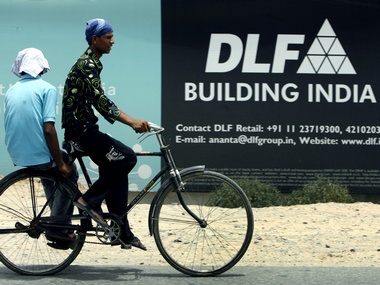The debate over how legally valid was the Competition Commission of India’s (CCI) decision to impose a Rs 630-crore fine on DLF, India’s largest real estate company by market value, refuses to die down. The company was fined by the competition regulator for abusing its “dominant” position and treating home buyers unfairly.
On Tuesday, two newspapers reported on how the CCI’s definition of the term “relevant market” appeared to be on a weak legal ground, according to some experts. The definition is important because it was used by the CCI to determine whether DLF was a dominant player and had abused its dominant position in the relevant market.
[caption id=“attachment_77279” align=“alignleft” width=“380” caption=“the regulator had received more than 10 complaints from other DLF projects’ associations, including Park Place, Magnolias, Aralias and New Township Heights. Reuters”]  [/caption]
The CCI’s ruling was in response to a complaint against DLF Home Developers Ltd , a DLF group company, filed in 2008, for completion delays and the firm increasing a number of apartment units in two projects without the consent of the allottees. The complaint was filed by the Belaire Owners’ Association.
Experts quoted by The Economic Times and Mint pointed out that the CCI had possibly wrongly interpreted the meaning of relevant market and would, therefore, not be defensible in higher courts.According to one expert, the CCI used all-India revenue data to estimate the property developer’s market share in Gurgaon, which he argued, was too narrow.The CCI, in its defence, claimed that it did not consider only market share while determining relevant market, noting that the Competition Act contained 13 criteria to determine market share, ranging from economic power to entry barriers.
Impact Shorts
More ShortsLegal experts have also raised questions about why no show-cause notice was issued to DLF before CCI imposed its penalty. In addition, one industry observer said the competition regulator’s decision might be in conflict with the freedom of contract, guaranteed by law.
The fact the CCI did not conduct an econometric test called SSNIP - a small but significant and non-transitory increase in price - standard practice in international competition law, could also weaken the regulator’s position further, according to some experts.This test is mandatory for determining the availability of substitutes for a product or an area. The CCI presumed that a 5 percent increase in high-end residential apartments in Gurgaon would not cause buyers shift to another location or apartment, thus making the city the only option for buyers. In reality, that might not be true, said experts.
What does all this mean for DLF and home buyers? Given the legal concerns about CCI’s ruling, experts say DLF has enough ammunition to approach the Competition Appellate Tribunal and appeal against the ruling. If it fails to win a favourable verdict, it can then approach the Supreme Court. DLF has already indicated it will not accept the ruling without a fight. Most analysts are already pricing in a long-drawn legal battle before DLF pays up - if at all. After meeting a CCI member, Emkay Securities issued a research note stating the entire issue could take “at least 12 months to resolve”.
Emkay also noted that the regulator had received more than 10 complaints from other DLFprojects’ associations, including Park Place, Magnolias, Aralias and New Township Heights. Even if the CCI passed any order in favour of these new complaints, the penalty is, however, unlikely to increase from Rs 630 crore, Emkay noted. The regulator has the right to impose a penalty of up to 10 percent of the average turnover of the past three years, which could amount to a maximum penalty of Rs 900 crore for DLF.
What about other real estate developers? Are they likely to be slapped by similar penalties? Emkay thinks no, noting that since the CCI had proved DLF’s dominance in the market by making other developers seem smaller in size, it could not usethe “dominance” argument against the rest of the developers. That view is shared by several analysts and industry observers.
For home buyers, the CCI’s ruling had initially seemed like a big victory, but given the legal wrangling still ahead, it might be a while before that victory feels complete. To be sure, home buyers aren’t giving up.Lawyers for the owners’ associations for Belaire and Park Place, the two DLF properties at the centre of the case, are preparing a claim for more compensation, which could go up as high asRs 2,000 crore, reported Mint.“We are preparing a compensation petition to file before Compat (Competition Appellate Tribunal), and each of the allottees is going to claim not less thanRs 80 lakh toRs 1 crore,” said Supreme Court lawyer ML Lahoty, who represents buyers in both projects.
Clearly, we haven’t heard the final word on this matter yet.


)

)
)
)
)
)
)
)
)



